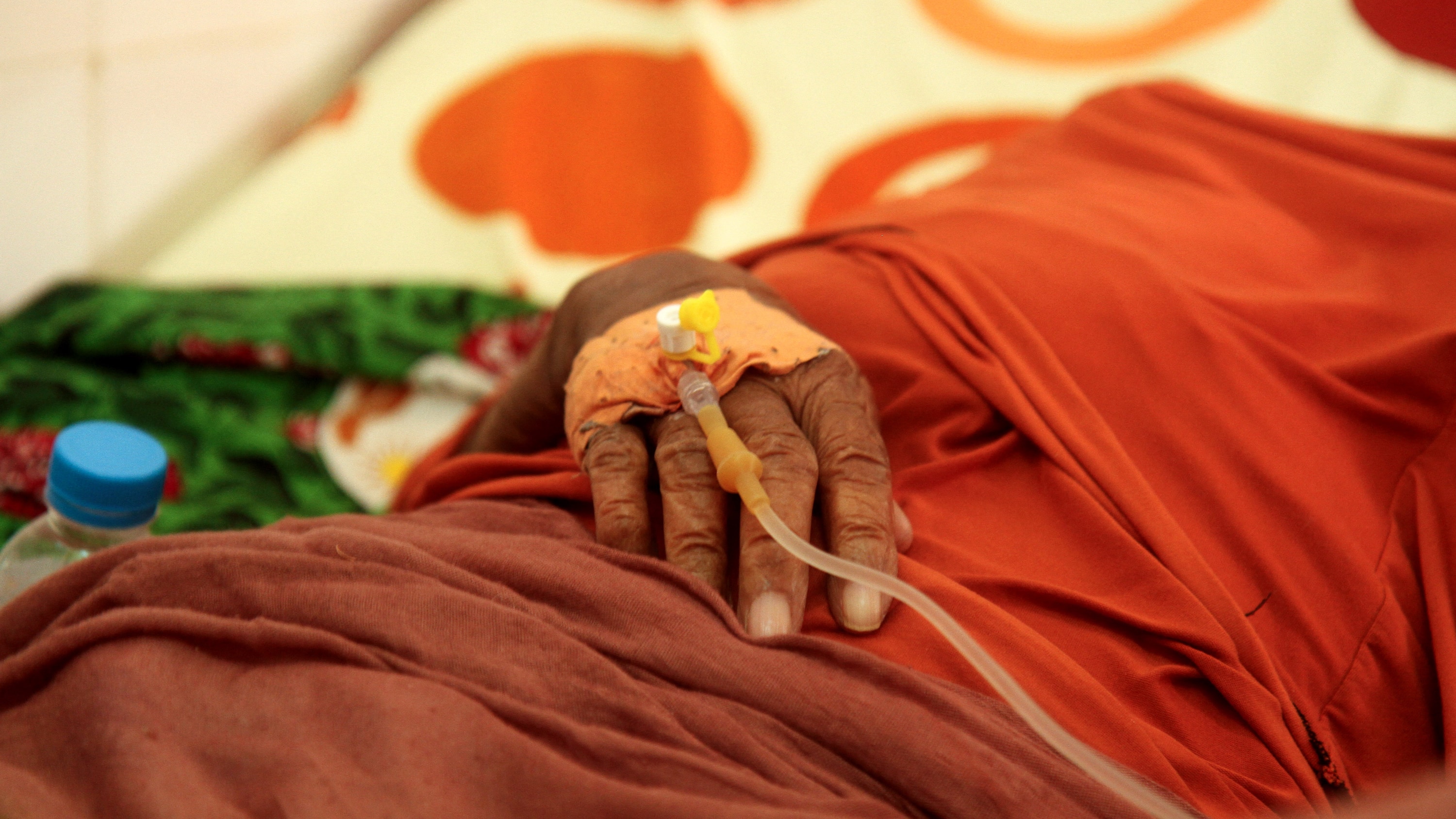For weeks now, the heat in India has been unrelenting.
A new record was set in Delhi on Wednesday, with the temperature reaching a stifling 52.9 C. The Indian Meteorological Department (IMD) is investigating the reading as it differed from other nearby temperatures by anywhere from three to five degrees.
But the country has been in the grips of temperatures into the mid-40s over the past week.
“When we go outside it seems like someone is slapping our faces. It has become difficult to live in Delhi,” said resident Akash Nirmal.
The good news is that temperatures are forecast to drop by up to four degrees in northwest and central India over the next few days, the weather agency said.
However, temperatures could rise in parts of east India and the south peninsula during the same time.
Third straight year of heat waves
Temperatures often peak during May and June in India, but IMD scientist Soma Sen Roy told Reuters the department was predicting seven to 10 heat wave days in northwestern regions this month, well up from the usual two or three.
According to a recent article in the journal Nature, this is the third year in a row that the country has experienced severe heat waves.
With thermometers recorded reaching 52 C, residents of New Delhi are feeling the heat. There are concerns for people’s wellbeing as people in India’s capital wait for cooler winds from the Arabian Sea to bring some relief.
It was expected.
In April’s three-month IMD forecast, the agency called for above-normal heat wave days over parts of the south peninsula, east India, central India and the plains of northwest India.
India declares a heat wave when the maximum temperature is 4.5 C to 6.4 C higher than normal. A severe heat wave is declared when it is at least 6.5 C higher than usual.
The deadliest heat wave was in 2015 when more than 2,000 people were killed by the extreme heat.
“Heat waves are a silent killer,” Roop Singh, climate risk adviser with the Red Cross Red Crescent Climate Centre, said in a webinar on Tuesday. “We don’t see the same images that we see when there’s an extreme flooding event or a hurricane that hits. We don’t see the same images of houses being sort of washed away, for example.”
Is this due to climate change?
Heat waves have been affecting much of the world. A report issued Tuesday by World Weather Attribution (WWA), Red Cross Red Crescent Climate Centre and Climate Central examined 76 extreme heat waves across 90 countries over a 12-month period starting May 15, 2023.
The report says in that period, 6.3 billion people — roughly 78 per cent of the population — experienced at least 31 days of extreme heat that “was made at least two times more likely due to human-caused climate change.”
“In many ways, [this heat wave] is anticipated with climate change. We know that climate change is going to lead to warming that’s been observed,” Andrew Pershing, vice-president of science at Climate Central, an independent group of scientists and communicators who research and report on climate change, told CBC News.
“It’s been predicted, we’re living in the world that climate models predicted 30 years ago,”
“So [on some] level, it’s not surprising. But it’s definitely surprising for the people who are living through these events. Because these are, in many ways, events that they haven’t experienced before, or they’re longer or they’re more intense or there are multiple events within the year.”
Daytime temperatures pose a threat to people, Pershing said, but so do abnormally high nighttime temperatures.
“If your nights aren’t cooling down, you lose that opportunity, you don’t have the chance to recover,” he said. “And I think it just adds to the stress that people are experiencing.”
In 2023, the planet experienced its hottest temperature on record, with July coming in as the hottest month. Part of that was driven by a strong El Niño — a natural warming in part of the Pacific Ocean that, coupled with the atmosphere, can have worldwide meteorological implications.
But typically, El Niño’s warming effects are felt early the following year. Some experts are concerned that 2024 could beat out 2023.
“The reason we’re talking about this, the reason we’re seeing these events … is because we have too much carbon dioxide in the atmosphere,” Pershing said. “And that’s because we’ve been burning coal, oil and natural gas. And until we stop doing that, every year, we’re going to keep adding to this burden that we’re imposing on people around the world.”
CBC’s Natasha Fatah talks to climate scientist Kiswendsida Guigma about the heat wave in West Africa



